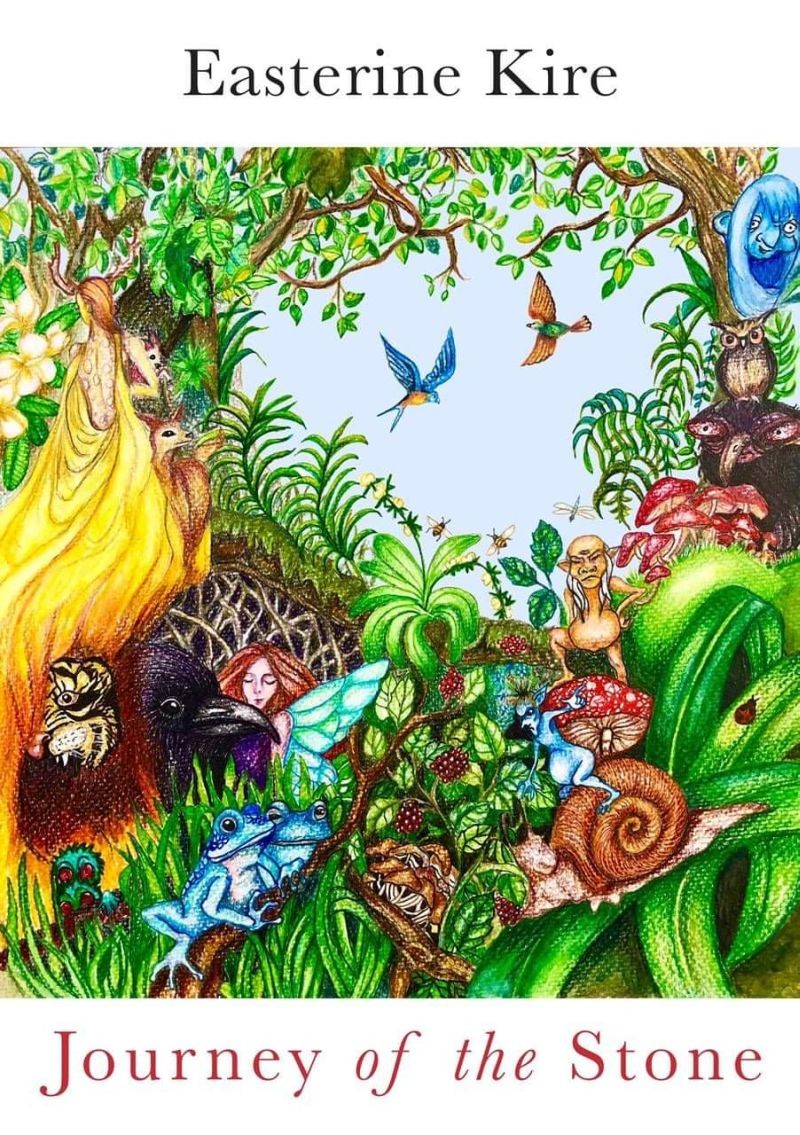
Lhütü Keyho
NEHU, Shillong
One pleasant quality that has become characteristic of Easterine Kire’s writings, a trait that I have come to anticipate whenever I pick a new book of hers, is her ability to integrate stories situated outside the novels into the narration with ease. Whether it is a character from the novel or the narrator himself/herself doing the telling, the stories in no way impress you as being forced. Kire achieves this even in Journey of the Stone, as she recounts and acquaints the reader with tales, for instance, of a group of young women in the forest who, with a song, coaxed a spirit to go away, or, of the man who looked at a spirit in the face and died.
These stories, even if there is no agenda behind them, can stand alone for they are brilliantly told. Even so, I believe that Easterine’s telling does more than just entertain. She understands that stories like these, especially our stories, because they are burdened with the load of our civilization— its past, heritage and culture— must be ‘written’(as opposed to being told) correctly. Lest she over mystifies the past and commit its experiences to a place so remote that we, ourselves, become removed from this history, she broadens these little stories in the mirror of the larger story— the continuation of Vilie’s from When the River Sleeps— that Journey of the Stone attempts to tell. In this meeting, in Vilie’s story’s penetration of these little stories, Kire achieves the vital deed of rendering the extraordinary as ordinary and vice-versa, the deed which brings stories to life; makes them lived experiences; and, presents them as that history that requires no tangible evidence because it is seen, heard and felt.
Having successfully unified these stories, Kire then orchestrates them towards a purposeful end— to the awakening of spiritual eyes. What becomes Vilie’s purpose— “to rescue those who are blinded and deceived”— also becomes the raison d’être of the novel and, I believe, the purpose of the author herself. This novel, as it is with her other works, becomes an attempt to negotiate a way to bridge the chasm between the disparate human and the non-human world. Using the conventional techniques of the magical realism writers, metamorphosis for example, she allows visions of both worlds to become represented. She opens up to her readers a plethora of worlds that are otherwise unseen, worlds that sometimes appear to collide and clash because one or both of the worlds do not understand each other.
The reader, through Vilie’s spiritualized eyes, becomes enlightened as he gets acquainted with the wisdom, for instance, of understanding the relationship between the were-tiger and its owner; the secrets and the answers that Chükhieo (the guardian of the wild animals) possesses; the kelhou-zho of the widow-spirits which no living human would become privy of; comprehending the malevolence of the spirits of the kharü and benign nature of the shining ones, etc. This awakening— the opening up of spirits— is critical. Our world is in much need of communication, of acknowledgements, not just among ourselves but between all the worlds that exists with us, so that we may finally repair, heal and bridge the gaps that we have wrought into our cultures.
If you have not read the book yet, I suggest that you come to it with an open mind, for whatever might have already been said about the book, it would still catch you off guard. It is many things at one and the same time. It is historical and modern; other-worldly and human; pre-Christian and Christian; ordinary and extraordinary.
And most importantly, Journey of the Stone takes you to the recesses of time and spaces you don’t think exist. And that, for me, makes for a good story. For, as Flanagan asks, “Shouldn’t stories go places where other things don’t exist?”
Journey of the Stone is published by Barkweaver Publications. Priced Rs 370, it is available for purchase at The Common Room, Kohima and online at ilandlo.com.




